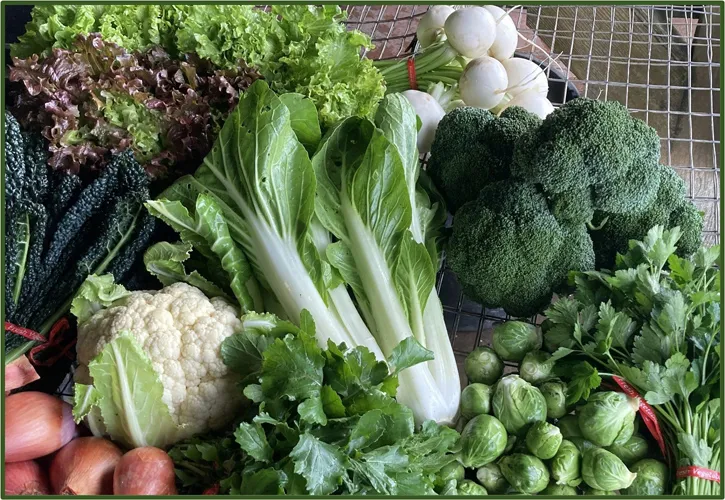While we’re in the middle of tending to the summer garden and harvesting green beans and cucumbers, it’s hard to accept that winter is coming… But now really is the time to prepare the ground and begin planting the veggies that you’ll be harvesting during the short days from December through February. Many cool-season crops can be harvested during winter in much of Humboldt & Del Norte counties, but they are not actually putting on much new growth outdoors during this period, so to enable this harvest we need these crops to be mature (or close to it) by the end of October. Here is a list of when to plant vegetables for winter harvests:
JULY
- Transplant: Brussels Sprouts, Leeks, Overwinter Cauliflower (ex. “Prestige”), Storage Cabbage (100 days +)
- Direct Seed: Storage Carrots (80 days +)
AUGUST
- Transplant: Cauliflower (last planting), Chard, Fall Cabbage (80 days or less), Kale, Overwinter Cauliflower (ex. “Prestige”), Purple Sprouting Broccoli,
- Direct Seed: Beets, Carrots (70 days or less)
SEPTEMBER
- Transplant: Broccoli (last planting), Escarole, Lettuce (last planting), Kohlrabi, Napa Cabbage, Radicchio, Scallions
- Direct Seed: Spinach (latest sowing), Turnip
OCTOBER
- Transplant: Mustard Greens, Pak Choi
- Direct Seed: Arugula, Cilantro, Radish
October is also the time to plant cover crops, fava beans, and sweet pea for spring flowers.
NOVEMBER (greenhouse or high tunnel only*)
- Transplant: Lettuce, Pak Choi, Parsley
- Direct Seed: Arugula, Cilantro, Radish, Salad Turnip, Scallions, Spinach
*The exceptions to the greenhouse/high tunnel rule are garlic and strawberries: November is a great time to plant garlic and bare-root strawberries.
Recommendations to transplant or direct seed are based on the optimal culture for that crop; however, it’s really up to you. If you are direct-seeding crops that are listed here to transplant, sow them three weeks sooner than the listed dates. If you are raising your own seedlings to transplant, start them four weeks sooner than the listed transplanting dates.
On a final note, keep in mind that there is quite a bit of variability between varieties of a crop. Look for varieties with the keywords “winter,” “late,” or “storage” in their descriptions. Many seed packets will list the number of “days to maturity,” and the ones that perform best through winter are often the ones that take the longest to mature and need to be planted earlier. So, leave some beds empty after your spring & early summer crops are finished to have room to plant these winter delights.

Article by Eddie Tanner, DeepSeeded Community Farm, Arcata CA.

